- 843-237-1698
- Mon - Fri 9:00 am - 5:00 pm
- 843-237-1698
- Mon - Fri 9:00 am - 5:00 pm
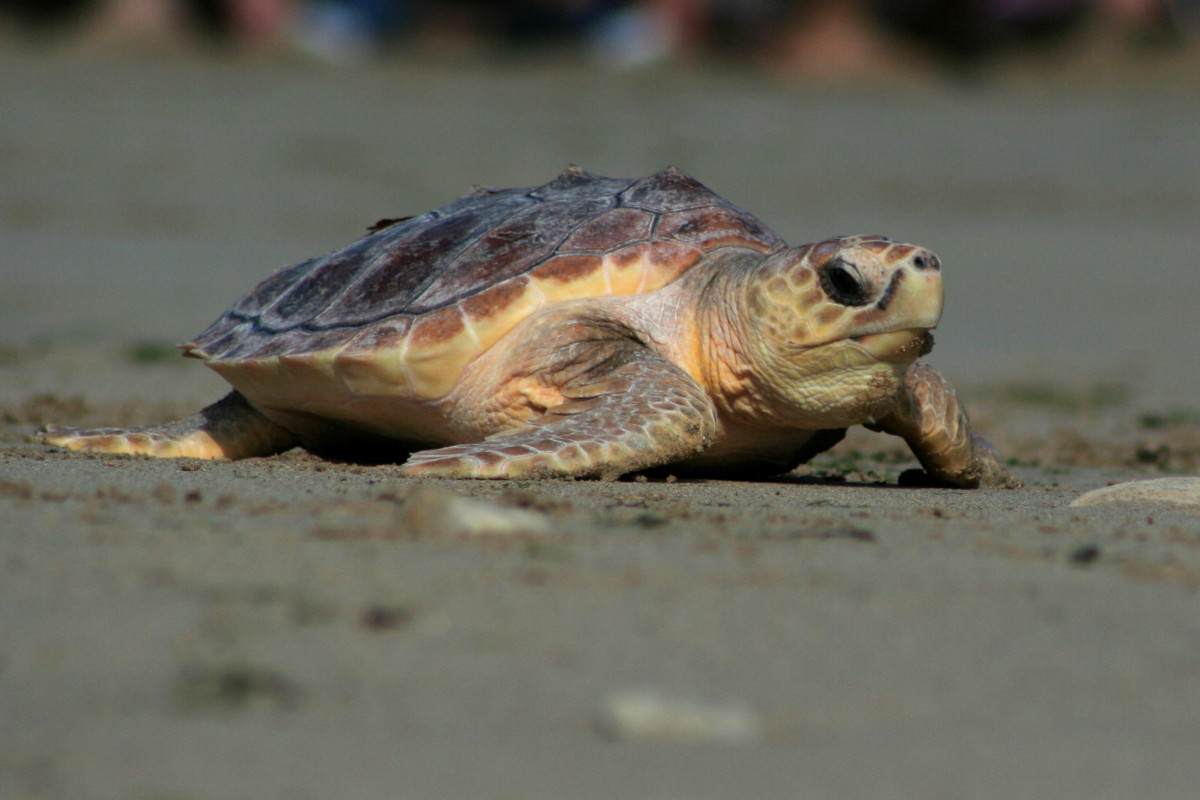
Mary Schneider is currently the SCUTE coordinator for Pawleys Island, maryschneider@sc.rr.com. She is supported by 50 local resident volunteers. Under a permit from the SC Department of Natural Resources, SCUTE volunteers serve as stewards to protect the turtles’ nesting habitat and as educators to those who show an interest in learning more about our turtles and how to help them. From May until the last nest hatches, volunteers monitor the beach at dawn each day for signs of turtle activity, whether that be a simple crawl onto the beach, the laying of a new nest, or the evidence of an overnight nest hatch. SCUTE volunteers wear distinctive white tee shirts. You are invited to address any of your sea turtle questions to these volunteers.
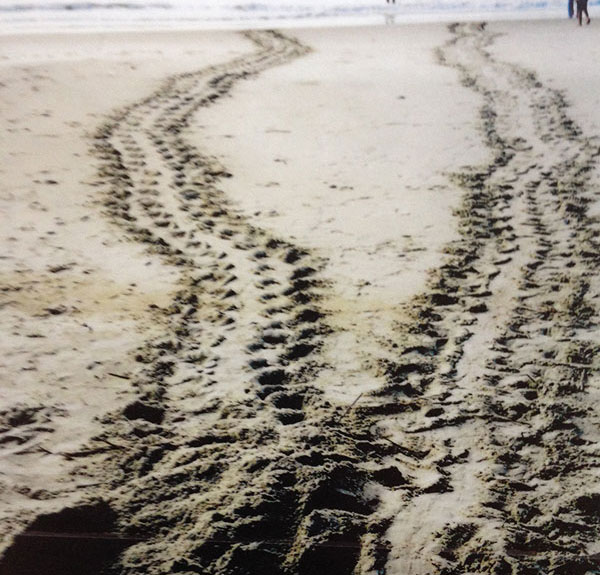
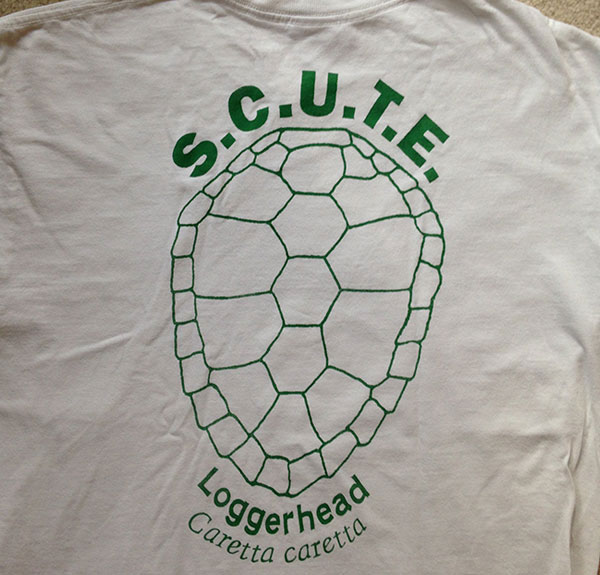

There are seven species of sea turtles worldwide: leatherback, green, loggerhead, Kemp’s Ridley, flatback, hawksbill, and olive Ridley. Virtually all turtles that lay nests on Pawleys Island are loggerheads – a species over 150 million years old. Adult loggerheads are 3 x 4 feet in size and weigh 300 pounds (seen in the video above). Every second or third year, they lay 4 or 5 nests a season, each containing an average of 120 ping-pong-sized eggs. Nests that are laid in the inter-tidal zone or areas at risk for foot traffic are carefully relocated by SCUTE volunteers who have been trained and authorized by the SC Department of Natural Resources. You can spot sea turtle nests by their distinctive orange screening and orange signs on nest poles.
In recent years loggerheads have made a recovery despite still being classed as endangered by the US Dept. of the Interior. Nesting on Pawleys Island has increased from an average of 8 nests a year from 1996 – 2001 to an average of 20+ nests in the years 2010 – 2022. There was a record number of 35 nests on Pawleys Island in 2021 with 30 more in 2022. Loggerhead nests incubate for an average of 60 days with hatching almost always occurring in the coolest/darkest hours of the night. Three days after a hatching is reported by a SCUTE volunteer, the nest is inventoried and its varied contents (hatched shells, live hatchlings, un-hatched shells, dead hatchlings) are reported to the SC/DNR. These inventories are excellent opportunities for the public (particularly children!) to learn about sea turtles and their protection.
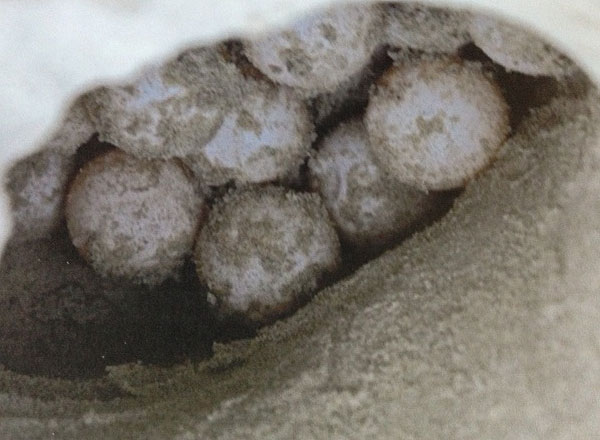

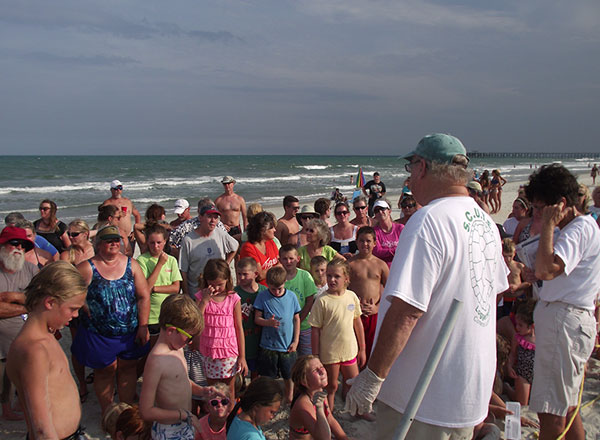
Public inventories on Pawleys Island close to public access are always scheduled at 6:00 pm and are announced by a SCUTE notice on this website, on FACEBOOK/SCUTE, and that at door of the Pawleys Island Town Hall. Inventories are often observed by more than 100 vacationers with SCUTE volunteers providing informative talks during the process. Any live hatchlings found in a nest are released on the beach to start their life journeys in the ocean (see video below). After 30 years, the females will return to Pawleys Island (or nearby beaches) to begin their nesting history. DNA has confirmed that the same turtles return to Pawleys Island over the years, even after foraging throughout the Atlantic Ocean basin. This is made possible by the incubating turtle imprinting the magnetic coordinates of its birthplace.

Since 2010, the (20+) SC/Department of Natural Resources Sea Turtle Projects have been actively participating in a Loggerhead Sea Turtle DNA research project jointly with the University of Georgia School of Forestry and Natural Resources. Dr. Brian Shamblin at UGA has pioneered this valuable research. SC Projects have collected a DNA sample egg from every Loggerhead nest in their areas. There is now a twelve-year continuing record of every surveyed nest. This valuable research has yielded data about, e.g., the number of unique nesters, multiple nests by the same turtle in a season, the hatching success of her nests, the number of turtles returning to our respective beaches regularly, and the number of first-time nesters (“recruits”) that hatched on our beaches 30+ years ago. There is a tax-deductible way to aid sea turtle research. UGA has established a website to ensure that 100% of every donation goes directly to the project. Anyone interested in giving financial support by credit card can do so here:
https://shamblinlab.wixsite.com/genetics/support-our-research.
Donations can also be made by check made out to “University of Georgia Foundation” and mailed to: Dr. Brian Shamblin, Warnell School of Forestry and NR, University of Georgia, 180 East Green Street, Athens, Georgia 30602.
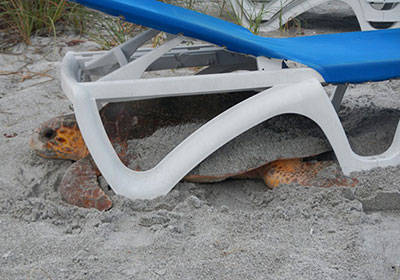 When you leave the beach each evening, take all of your belongings, and your trash, with you. Balloons and plastics are particularly dangerous because they look like turtles’ favorite food – jelly fish — when floating in the water. And please take down your shelters, beach chairs and tents as they present an entanglement danger to the turtles, and they can create obstructions which frighten the mothers and cause them to leave the beach without laying their eggs.
When you leave the beach each evening, take all of your belongings, and your trash, with you. Balloons and plastics are particularly dangerous because they look like turtles’ favorite food – jelly fish — when floating in the water. And please take down your shelters, beach chairs and tents as they present an entanglement danger to the turtles, and they can create obstructions which frighten the mothers and cause them to leave the beach without laying their eggs.
Everyone likes to dig a hole or two in the sand and build sand castles, but at the end of the day please fill in those holes and take down your castles so that neither turtles nor people fall in them or over them over night.
It is VERY important to have a dark beach in order for the turtles to come ashore and lay their eggs. Artificial lighting disorients the babies and discourages the mothers. After dark, please turn off outdoor lighting and shut curtains or blinds where indoor lighting can be seen from the beach. And do not use flashlights on the beach at night. They are just as detrimental as a floodlight.
If you see a turtle nesting, please respect her needs and leave her alone to take care of Nature’s work — she has an enormous task to accomplish. It’s okay to watch quietly from a distance, but no taking pictures or shining lights in her direction, and certainly do not disturb the nest in any way.
The sea turtles that visit our beaches are all Federally protected, so only individuals with special authorization and training experiences are permitted to touch the turtles (live or dead), their eggs, or their nests; disturbing any sea turtle, its nest or its eggs is punishable under Federal law and carries large fines as well as possible jail sentencing. If you see a turtle on the beach, leave it alone! If it is injured or somehow in distress, call this number, 843-455-1242, and record the nature of the problem and the location of the turtle. A SCUTE coordinator will respond as soon as possible. If it is a mother coming in to lay her eggs, sit quietly at a distance and do not disturb her as she goes about her business.
All of these present obstructions for the nesting and emerging turtles and can harm them either by entrapment or entanglement.
These bright lights confuse and disorient an adult or hatchling turtle and may cause them to head into dangerous areas like parking lots.
Disturbing or harassing sea turtles is against the law; if you encounter a turtle on the beach, keep others away and call SCUTE leaders for assistance.
Special authorization by the Department of Natural Resources is required for handling baby turtles and the turtle nests. ONLY those who have received special training are permitted to do so; others are subject to disciplinary actions at state and Federal levels.

Town of Pawleys Island
323 Myrtle Avenue
Pawleys Island, SC 29585
Town of Pawleys Island
323 Myrtle Avenue
Pawleys Island, SC 29585

Town of Pawleys Island
323 Myrtle Avenue
Pawleys Island, SC 29585